| Date | Text | |
|---|---|---|
30 Nov 1991

Saola |
Saola (biology) Saola first identified in the Vũ Quang rainforest reserve of northern Vietnam. This member of the bovini tribe is the first large mammal new to science anywhere in the world for more than fifty years and it will take another two decades before live specimens are recorded. |
|
30 Nov 1991
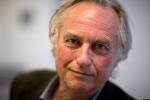
Richard Dawkins |
Richard Dawkins (biology) British evolutionary biologist Richard Dawkins delivers the 1992 Voltaire Lecture, "Viruses of the Mind", describing religion and the belief in god as a parasitic memetic virus that infects human minds |
|
30 Nov 1991

International Society for Bayesian Analysis |
International Society for Bayesian Analysis (mathematics) International Society for Bayesian Analysis founded by Arnold Zellner. |
|
30 Nov 1991

Hungary |
Hungary (physics) Hungary becomes a member of CERN. |
|
30 Nov 1991

IBM Simon |
IBM Simon (technology) The IBM Simon, a touchscreen mobile phone and personal digital assistant considered the first smartphone, is introduced. |
|
30 Nov 1991

Turing Award |
Turing Award (awards) Turing Award: Butler Lampson |
|
30 Nov 1991
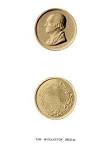
Wollaston Medal for Geology |
Wollaston Medal for Geology (awards) Wollaston Medal for Geology: Martin Harold Phillips Bott |
|
01 Jan 1992
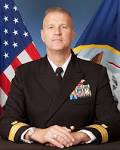
Rear Admiral |
death Rear Admiral Rear Admiral Grace Hopper (b. 1906), American pioneer computer scientist. |
|
05 Jan 1992
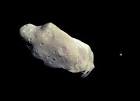
Asteroid |
Asteroid (astronomy) Asteroid 5751 Zao is discovered by Masahiro Koishikawa. |
|
17 Jan 1992

Henry Melson Stommel |
death Henry Melson Stommel Died 17 Jan 1992 at age 71 (born 27 Sep 1920). American oceanographer and meteorologist who was an expert on physical oceanography, primarily in the interpretation of data associated with large scale ocean dynamics. He had a long standing interest in the Gulf Stream. He spent most of his career conducting research at the prestigious Oceanographic Institute in Woods Hole, Massachusetts. Considered one of the most influential oceanographers of his time, Stommel proposed many theories that were later proven to be correct by other scientists. He applied electromagnetic measurements to oceanic flows, the dynamics of estuaries and the related problem of hydraulic controls, and the interaction of nonlinear eddy-like phenomena (hetons). |
|
09 Mar 1992
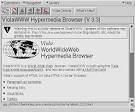
ViolaWWW |
ViolaWWW (computer science) ViolaWWW, the first popular Web browser, created by Pei-Yuan Wei in the United States, is publicly released for Unix. |
|
30 Mar 1992
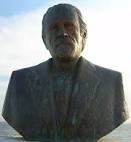
Manolis Andronicos |
death Manolis Andronicos Died 30 Mar 1992 at age 72 (born 23 Oct 1919). Greek archaeologist who discovered ancient royal tombs in northern Greece, possibly belonging to the Macedonian King Philip II, the father of Alexander III the Great. In autumn 1977, an Andronicos discovered the unplundered royal tomb containing works of art of astounding richness and exquisite craftsmanship at Vergina in Macedonia. His suggestion that the tomb's occupant was probably Philip, son of Amyntas, king of the Macedonians, created understandable sensation, and aroused world-wide interest. |
|
06 Apr 1992

Isaac Asimov |
death Isaac Asimov Isaac Asimov (b. 1920), American science author. |
|
10 Apr 1992

Peter D. Mitchell |
death Peter D. Mitchell Peter D. Mitchell (b. 1920), English Nobel laureate in chemistry. |
|
21 Apr 1992

extrasolar planets |
extrasolar planets (astronomy) First confirmed detection of extrasolar planets with announcement of the discovery of several terrestrial-mass planets orbiting the pulsar PSR B1257+12 by Aleksander Wolszczan and Dale Frail. |
|
15 May 1992

Robert Morris Page |
death Robert Morris Page Died 15 May 1992 at age 88 (born 2 Jun 1903). American physicist who invented the technology for pulse radar while employed at the U.S. Naval Research Laboratory. From pioneering work with early radio leaders, Dr. Page conceived and developed circuitry and components in the 1930's for early pulse radar systems which used short bursts of electromagnetic radiation to detect and locate distant objects. During WW II, this invention was vital to the Allies for detection of enemy planes, ships, and other targets. After the war, Page continued research into peacetime applications of radar, airborne radio and other fields of electronics. He held sixty-five patents for innovations in these fields, now applied in navigation, weather forecasting, astronomy, automation and related technical fields. |
|
01 Jun 1992
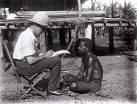
anthropologist |
anthropologist (anthropology) British anthropologist Robin Dunbar proposes Dunbar's number (approximately 150) as a cognitive limit to the number of people with whom an interpersonal relationship can be maintained in human communities. |
|
26 Aug 1992

Daniel Gorenstein |
death Daniel Gorenstein Daniel Gorenstein (b. 1923), American mathematician. |
|
30 Aug 1992

trans-Neptunian object |
trans-Neptunian object (astronomy) Discovery of (15760) 1992 QB1, the first trans-Neptunian object to be found after Pluto and Charon. |
|
01 Sep 1992
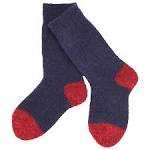
SOCKS |
SOCKS (computer science) The SOCKS Internet protocol is made public. |
|
01 Oct 1992

Cochrane Centre |
Cochrane Centre (medicine) First Cochrane Centre opens (in the UK) and the first Cochrane Review Groups (Pregnancy & Childbirth and Subfertility) are registered. |
|
29 Oct 1992

Food and Drug Administration |
Food and Drug Administration (medicine) The Food and Drug Administration approves Depo Provera for use as a contraceptive in the United States. |
|
31 Oct 1992

Pope John Paul II |
Pope John Paul II (astronomy) Pope John Paul II issues an apology and lifts the edict of the Inquisition against Galileo Galilei. |
|
05 Nov 1992

Jan Oort |
death Jan Oort Jan Oort (b. 1900), Dutch astronomer. |
|
05 Dec 1992

Emil W. Haury |
death Emil W. Haury Died 5 Dec 1992 at age 88 (born 2 May 1904). American anthropologist and archaeologist whose investigations of the ancient Indian civilizations of the southwestern United States and South America focussed on the preceramic and ceramic archaeology of the southwestern U.S. and Mexico; the archaeology of the Hohokam, Mogollon, and Anasazi Indians of the southwestern United States; and the archaeology of the Chibcha Indians of the northern Andes. He assembled one of the first prehistoric-to-historic archaeological records of the Southwestern U.S. |